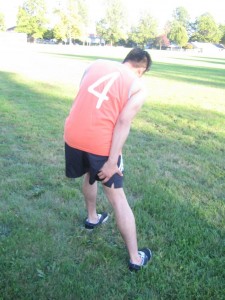Lacrosse is one of the oldest sports and has roots in Native American cultures. This sport is played by both boys and girls of all ages which is fast-paced and free flowing. Lacrosse is a combination of rapid changes in direction and speed which makes it likely to cause various injuries.
Common lacrosse injuries
Lacrosse is a moderate risk sport in which various injuries can occur including sprains, strains and bruises. Nevertheless, more serious injuries can also occur.
- The non-contact knee and ankle ligament sprains that are sustained while dodging and cutting are quite common in lacrosse. Ankle sprains are the commonly reported lacrosse injuries in both boys and girls.
- Knee injuries including anterior cruciate ligament (ACL) tears are the leading causes of lost time in practice and game for both boys and girls.
- Muscle strains of the quadriceps, hamstrings and groin are common and also linked to non-contact mechanisms.
- Head and facial injuries including concussions are less frequent.
Muscle strains of the quadriceps, hamstrings and groin are common and also linked to non-contact mechanisms. - Foot blisters and shin splints are also common lacrosse injures and related to continuous running and changing field surfaces.
- Abrasions on the uncovered lower extremities can also occur and require proper cleaning and protection.
Management of lacrosse injuries
Just like with any injury, activity must be stopped until assessment can be carried out by a doctor. When it comes to minor injuries, the treatment usually involves rest, application of ice and elevation.
Other injuries might be serious and require a longer period of rest and rehabilitation. In severe cases, surgery might be needed. All head injuries must be assessed carefully. Athletes can resume play only after proper physical examination has been carried out and when the individual is free from symptoms.
Prevention of lacrosse injuries
- It is vital to be familiar with the rules of the game. Even though lacrosse among boys allows significant contact, it is a game that prioritizes skill and fitness. Remember that unprotected hits have no place in the game. As for girls, the rules must promote a free style of play and limited contact must be followed.
- Maintain open communication. It is vital to discuss the goal and health concerns with the coach and health provider to ensure that proper steps are made to prevent and manage any lacrosse injuries.
- Always stay shape all year round. Before the lacrosse season, it is best to start a program of plyometrics, conditioning, neuromuscular training and strength training aimed to the demands of the sport. Proper warm up must be performed by careful stretching and gradually increasing the intensity of the workouts. Regular hydration and getting plenty of rest is vital.
- Use the right equipment that properly fit.
- Always take a break for at least 1-2 days in a week and 1-2 months in a year to stay fresh as well as prevent burnout and overuse injuries.
- All suspected lacrosse injuries must be reported.

